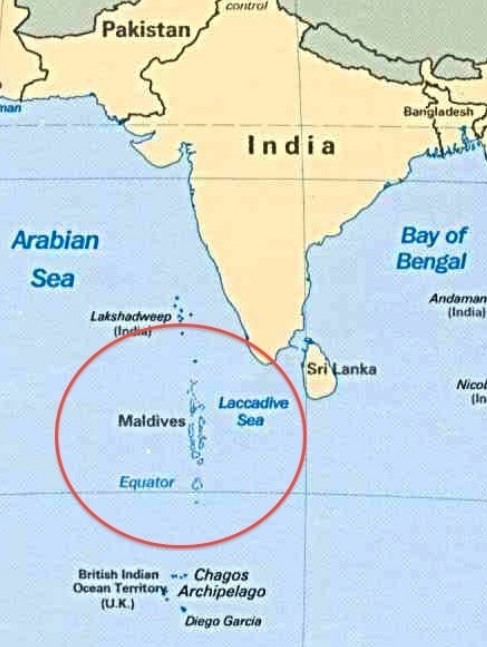Context:
The government of Maldives, one of the most low-lying terrains in the world, is developing at least three artificial islands to tide over the rising sea-levels due to climate change, showed a report by the National Aeronautics and Space Administration (NASA).
Relevance:
GS-III: Environment and Ecology (Climate Change and its impact)
Dimensions of the Article:
- About the concerns regarding Maldives and rising sea level
- Case of Hulhumale
- Other artificial islands and other solutions for Maldives
- India–Maldives relations
About the concerns regarding Maldives and rising sea level
- About 80 per cent of Maldive’s 1,190 coral islands are at an elevation of less than 1 metre (m) above sea level.
- Globally, the annual sea-level rise is recorded at 3-4 millimetres and has been accelerating. At this rate, it is only a matter of time that many of the islands are submerged.
- Low-lying islands will become uninhabitable by 2050 due to flooding and scarcity of freshwater according a 2018 United States Geological Survey.
- Sea-level will rise half a metre by 2100 if greenhouse gas emissions are drastically reduced, or by 1m if they continue to rise, the Intergovernmental Panel on Climate Change had warned.
Case of Hulhumale
- Hulhumale, located to the northeast of the archipelago’s capital, Male, has been created by pumping out sand from the seafloor onto a submerged coral platform and is now Maldives’s fourth-largest island.
- Hulhumale, that rises 2m above sea level, could become a refuge for Maldive’s population.
- The government had started constructing Hulhumale in 1997 on a lagoon off Male to accommodate the capital’s population swell. Now, the island covers an area of 4 square kilometres and is home to 50,000 people. Its population could grow to 200,000 in the future.
Other artificial islands and other solutions for Maldives
- Since the 1990s, the government has also expanded at least two other coral atolls —Thilafushi and Gulhifalhuea — through land reclamation. They are currently being used as industrial areas or landfills.
- The natural properties of these coral atolls to resist sea-level rise offers a glimmer of hope.
- Most of these reefs in Maldives and elsewhere “have remained stable or even grown larger in recent decades”, NASA pointed out based on data from studies.
There are a couple of theories to explain this phenomenon:
- One, storms and flood that sweep the islands can deposit sediments scooped up from other land masses and elevate these islands.
- The second theory is that the coral reefs can produce excess sediment and grow taller, outpacing the rise in sea levels.
India–Maldives relations
- India and Maldives are neighbors sharing a maritime border and relations between the two countries have been friendly and close in strategic, economic and military cooperation.
- Maldives is located south of India’s Lakshadweep Islands in the Indian Ocean.
- Both nations established diplomatic relations after the independence of Maldives from British rule in 1966.
- India has supported Maldives’ policy of keeping regional issues and struggles away from itself, and the latter has seen friendship with India as a source of aid as well as a counterbalance to Sri Lanka, which is in proximity to the island nation and its largest trading partner.

Significance
- Maldives plays an integral role in realising the potential of Indian Ocean blue economy as a contributor to the security and sustainable development of sea resources.
- The growing Chinese presence in the archipelago could have serious security implications.
- The crucial oil supply coming from Gulf nations to India pass through this area.
- There are about 25,000 Indian expatriates in Maldives who are engaged in a number of professional pursuits and their security is also of prime concern for India.

-Source: Indian Express



